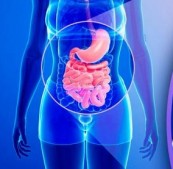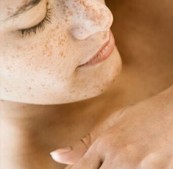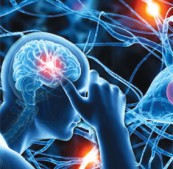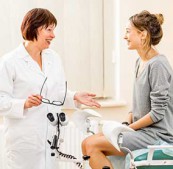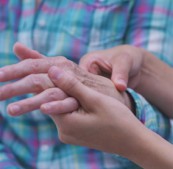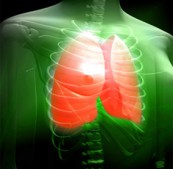Parkinson's Disease

Parkinson's disease has a major socioeconomic impact on society. It is a neurodegenerative disease characterized by sensory and motor impairment involving resting tremor, postural instability, gait difficulty, rigidity, speech difficulty, behavioral changes etc. The chronic progressive course of the disease often leads to severe disability resulting in high expenses of treatment and rehabilitation of patients. The treatment mainly consists of amelioration of the symptoms with Ayurvedic Medicines and Panchakarma treatments.
Brief with types:
Parkinsonism
- Drug-induced Parkinsonism – Due to long term intake of medicines with or without medical advice especially for neurological problems, chest related problems and antidepressants
- Essential Tremor- Essential Tremor (ET) is a relatively common condition that results in trembling in the hands or arms, which in some cases can subsequently spread to cause tremor of the head, legs, trunk or voice.
Parkinsonism plus syndrome/Atypical Parkinsonism
- Idiopathic Parkinson’s disease – Parkinson’s disease without any specific reason
- Vascular (Arteriosclerotic) parkinsonism- stroke symptoms tend to appear suddenly and do not progress, whereas the symptoms of Parkinson’s appear gradually and get worse over time. Vascular Parkinsonism usually affects the legs more than the upper part of the body.
Signs & Symptoms(Lakshana):
Primary symptoms can be divided into two:
1. Motor symptoms
2. Non-motor symptoms (Cognitive) - autonomic dysfunction, neuropsychiatric problems (mood, cognition, behavior or thought alterations)
Motor symptoms are considered cardinal in PD:
- Tremor- coarse slow tremor of the hand at rest which disappears during voluntary movement of the affected arm and in the deeper stages of sleep.
- Slowness of movement (Bradykinesia)- found in every case of PD, and is due to disturbances in motor planning of movement initiation, and associated with difficulties along the whole course of the movement process, from planning to initiation to execution of a movement.
- Rigidity-Rigidity is stiffness and resistance to limb movement caused by increased muscle tone, an excessive and continuous contraction of muscles
- Postural instability- typical in the later stages of the disease, leading to impaired balance and frequent falls, and secondarily to bone fractures, loss of confidence, and reduced mobility. Instability is often absent in the initial stages, especially in younger people, especially prior to the development of bilateral symptoms.
- Parkinsonian gait: Individuals with more progressive Parkinson's disease develop a distinctive shuffling walk with a stooped position and a diminished or absent arm swing. It may become difficult to start walking and to make turns. Individuals may freeze in mid-stride and appear to fall forward while walking.
Secondary symptoms of Parkinson's disease
While the main symptoms of Parkinson's disease are movement-related, progressive loss of muscle control and continued damage to the brain can lead to secondary symptoms. These vary in severity, and not every individual will experience all of them. Some of the secondary symptoms include:
- Anxiety, Insecurity feeling & Stress
- Confusion, Memory loss and Dementia (more common in elderly individuals)
- Constipation
- Depression
- Difficulty in Swallowing(Dysphagia) and excessive salivation(Drooling)
- Diminished sense of smell
- Increased sweating
- Male Erectile Dysfunction
- Skin problems(Especially below the knee)
- Slowed, Quieter speech and Monotone voice(Dysarthria)
- Urinary Frequency/Urgency(Urinary Incontinence)
The main stages in Parkinson’s Disease(PD):
Stage 1: mild symptoms (tremors and/or movement symptoms like swinging arm while walking) do not interfere with daily activities and occur on one side of the body.
Stage 2: Symptoms worsen with walking problems and both sides of the body are affected.
Stage 3: Main symptoms worsen with loss of balance and slowness of movement.
Stage 4: Severity of symptoms requires help; usually the person cannot live alone.
Stage 5: Caregiver is needed for all activities. The individual may not be able to stand or walk and maybe bedridden and have hallucinations and delusions.
Causes (Nidana):
- Hereditary
- Drug-Induced
- Traumatic (Internal & External)
- Exposure to extreme climatic conditions
- Exposure to Chemicals, Fertilizers and other Poisonous materials
Ayurvedic Treatments :
In ancient Ayurvedic treatises, there is a reference for Kampavata (Parkinson’s Disease)
“Kara paata thale kambe dehabhramana dukhitae,
nidra bango smriti ksheena kampavaatasya lakshana” -(Ref: Besavarajeeyam)
The classical treatment advised for Kampavata (Parkinson’s Disease) are
Panchakarma
Ayurveda takes a unique approach to the management by Ayurvedic principles with a special emphasis on eliminating their causes by Panchakarma and medicinal treatment with the help of a wide range of herbal and herbal-mineral drugs. Ayurveda describes a large number of nootropic drugs (stimulating to mental activity, causing cerebral or intellectual activity) and nervous system tonics (i.e., Rasayana in the treatment of Vata diseases). Being a neurodegenerative disease, Parkinson’s disease is treated by Rasayana or Rejuvinative approach in Ayurveda. Rasayana drugs are essentially nutraceutical agents and Medhya Rasayana is specific neuro-nutrients or nervine tonics with nootropic effect.
Medication
Internal medicines and external applications of medicines play a key role in the treatment of Parkinson's disease. Internal medicines include Kashaya(Decoction), tablets, capsules, Ghruthas(medicated Ghee) Bhasmas and medicated oils.
Pathya (Dietary Regimens)
Pathya for kampavata a nutritious diet:- high fibre food, wheat, jowar, kulatha, masha, til and sarsha (mustred) oil, ghee, milk, lashuna, hingu, ela, and specially meat of some selective animals.
Additional Treatment
- Regular physical exercise with or without physical therapy can be beneficial to maintain and improve mobility, flexibility, strength, gait speed, and quality of life.
- Medication can improve movement, cognitive and behavioral problems.
- Physiotherapy can help with movement and balance problems.
- Speech and language therapy can help with swallowing and communication difficulties.
- An occupational therapist can advise on equipment and adaptations in the home and can suggest strategies for carrying out daily tasks in order to retain as much independence as possible.
- A clinical psychologists counselling will help in cognitive disorders
Prevention
Avoid the natural urges, ratri jagarana, katu tikta kashya rasa,exessive chinta, shoka, cold water etc.
Parkinson's Questionnaire
Please Click Here and fill the questionnaire in the below link and we can help you better
